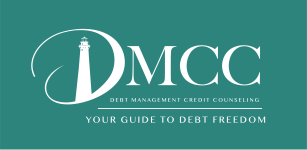Have You Bounced Yourself Out of a Checking Account?
How you can re-establish or maintain an account
Have you tried to open a checking account and been turned down? Or, did your bank close your account? If so, you’re not alone — and it’s important to understand why this can happen, and what you can do about it.
Consumers who frequently write bad checks or otherwise overdraw their account may find that their bank or credit union decides to close their account. In fact, between 2000 and 2005, financial institutions closed roughly 30 million checking accounts for these reasons, according to a 2008 Harvard Business School report.
You also may have trouble opening a new checking account elsewhere if your financial institution sent your name to a consumer reporting service that keeps track of negative information relating to how consumers use their deposit accounts, such as writing bad checks to merchants or having a checking account closed because of mismanagement. (The consumer reporting service receiving the information most likely will be ChexSystems, the dominant company in this field.)
Under the Fair Credit Reporting Act, a bounced check or other covered problem reported to a consumer reporting agency may stay on your record for as many as seven years. “Being on a check reporting system’s list means you may have a hard time opening a checking account for quite a while,” said Luke Brown, an Associate Director in the FDIC’s Depositor and Consumer Protection Division.
What steps can you take to fix an existing problem with your record? First, you can order a free copy of a report on you, if there is one. (To request a copy of a ChexSystems report and learn more from that company, go to www.consumerdebit.com or call 1-800-428-9623.)
“You should review the report and dispute any incorrect information,” advised Luke W. Reynolds, the FDIC’s Chief of Program Development and Outreach. He also said to beware of companies that promise they will clean up your record for a fee. “There’s no quick fix for negative information that’s legitimately reported to a consumer reporting service,” he added.
Above all, don’t give up on obtaining a traditional checking account. “There are banks and credit unions that are willing to open federally insured accounts to people who had trouble managing their accounts in the past,” Reynolds said. “These are often called ‘second chance’ checking accounts, but be sure to carefully evaluate the terms of any account, including any fees you’ll have to pay and any conditions you may have to meet.”
Reynolds also suggests going back to the institution that closed your account to see if it will give you the opportunity to open another account. And if you do obtain a new deposit account, whether at that institution or another one, work hard to use that account properly.
What can consumers do to avoid getting into this predicament? Use your checking account responsibly. That includes closely monitoring what money goes into and out of your account, including deposits, fees, debit card transactions, automatic payments and other withdrawals.
For tips on how to manage a checking account, go to www.fdic.gov and search for articles in FDIC Consumer News and other material, including the FDIC brochure Your Guide to Preventing and Managing Overdraft Fees.
www.fdic.gov
